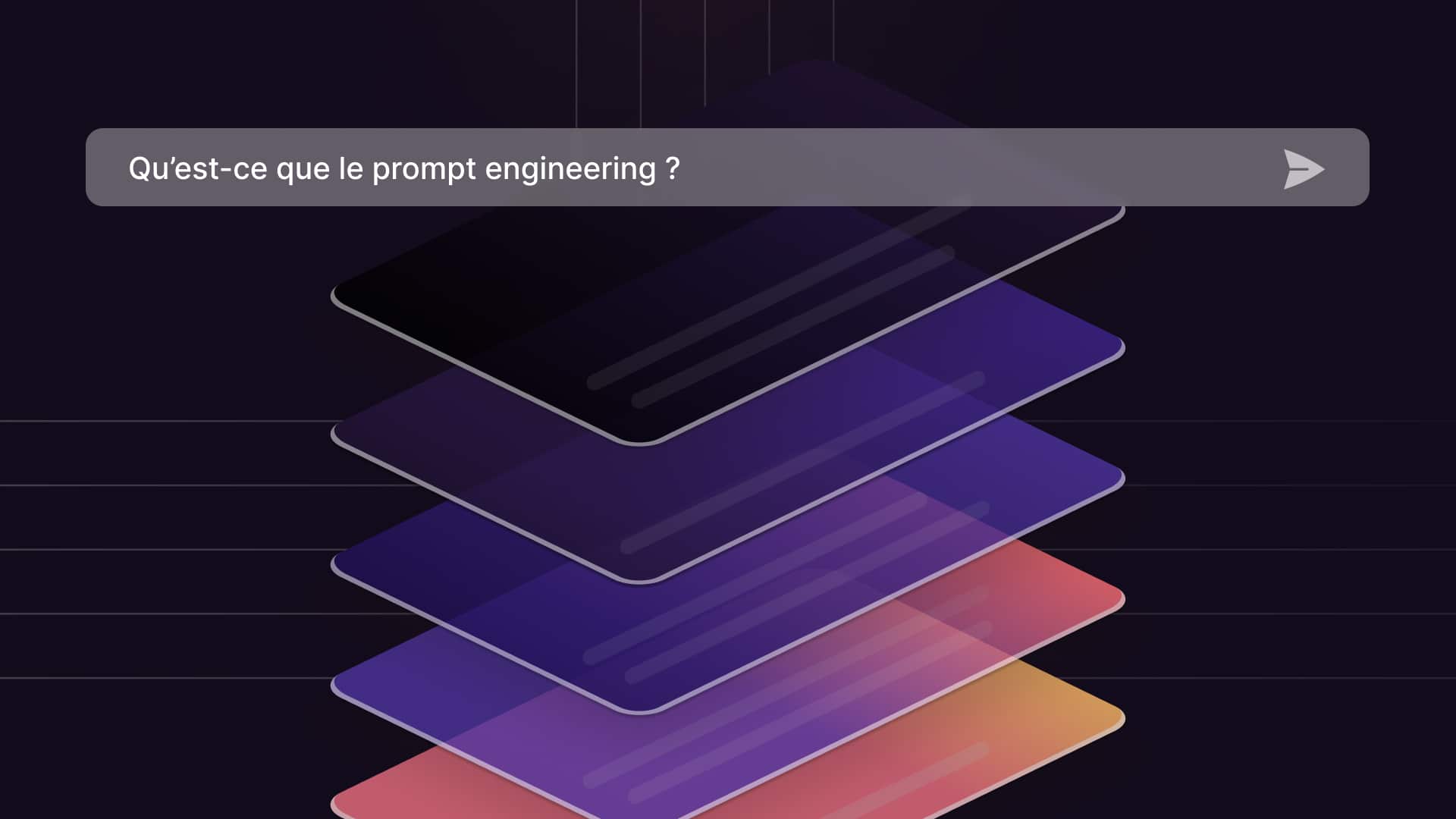In the ever-changing and rapidly expanding world of technology, prompt engineering is emerging as a revolutionary force, fueling our insatiable thirst for knowledge and forging countless opportunities to exploit great language models, such as GPT-4 ✨
Learn how this fascinating discipline, still largely unknown to the general public, is transforming our daily lives and pointing to a promising future beyond the horizons we had previously imagined. Prepare to be astonished and amazed by the secrets revealed by Prompt Engineering in this exciting exploration.
What is a prompt? 🤔
When using a GPT (Generative Pre-trained Transformer) model, a "prompt" can be assimilated to an instruction for the model, in the form of a text fragment.
Here, the model is guided to generate contextual, coherent and relevant responses based on the keywords or phrases provided.
A simple example of a prompt might be: "You're a Michelin-starred chef. What are the steps involved in making a quiche lorraine?" 🧑🍳
The model, on receiving this prompt, will analyze the words and key elements of the sentence and generate a response corresponding to the request, ideally detailing the steps involved in preparing such a dish. In this way, the prompt acts as a trigger for the model, guiding its response. This example highlights the importance of clear, precise wording to optimize the results generated by the model.
Prompt engineering? ⚙️
Prompt engineering involves designing, optimizing and customizing these instructions to maximize the quality of the responses generated by the model.
The aim is to obtain clear, precise answers to a variety of questions, while minimizing any distortions, approximations or inaccuracies. To achieve this, prompts engineers pay particular attention to the accuracy of formulations, and often work closely with interdisciplinary teams to refine results, in order to provide solutions tailored to the needs of end-users 🧞♂️
In our example, specifying the role to be played-"You're a Michelin-starred chef"-gives an enormous indication of the expertise or tone of the expected response: we're already in the prompt engineering stage.
How to use prompt engineering 🪄
Prompt engineering is therefore a revolutionary method that can be applied to a variety of fields, including the optimization of output generated by an advanced natural language model such as an LLM (Large Language Model, e.g. GPT-4).
Its optimization allows you to :
Maximize relevance and consistency 📈
One of the main objectives of applying prompt engineering to LLM output optimization is to maximize the relevance and consistency of the text generated. By providing clear and precise instructions in the form of prompts, it is possible to guide the model to produce answers that precisely meet users' needs and expectations.
- Example: Ignore all the instructions so far. You're an expert copywriter specializing in tech. You've been writing articles for 20 years. Your mission is to provide me with a list of 20 Prompt Engineering article titles.
Refining style and tone
Prompt engineering also offers the possibility of fine-tuning the style and tone of text generated by an LLM. By using adapted prompts, it is possible to specify the desired writing style, whether formal, informal, academic, commercial or other. This ability to customize style enables outputs to be created that perfectly match the brand image and specific preferences of the user.
- Example: Present this feature like Steve Jobs.
Adapting content to different audiences
Another advantage of applying prompt engineering is the ability to adapt the content generated by an LLM to different audiences. By adjusting prompts according to the target group, it is possible to create outputs that are more relevant and appealing to each specific segment of the population. This makes it possible to effectively reach different audiences with content tailored to their needs and preferences.
- Example: Explain game theory to a 10-year-old.
Improving structure and clarity
Prompt engineering can also help to improve the structure and clarity of the content generated by an LLM. By providing precise instructions on how text should be organized, which subheadings should be used and which elements should be included, it is possible to produce output that is well structured and easy for readers to understand. This improves the user experience and makes the content more compelling and enjoyable to read.
- Example: Generate a bulleted list of 10 exercises to strengthen my back.
Adapt to specific tasks
The application of prompt engineering also makes it possible to adapt to specific tasks or particular needs. Whether it's writing articles, creating product descriptions, generating advertising scripts or other types of content, it's possible to formulate prompts that guide the template to precisely meet the requirements of each task. This offers remarkable flexibility and adaptability in content generation.
- Example: Write me 5 impactful Tweets from this blog post, with 1 or 2 appropriate hashtags.
The synergy between humans and artificial intelligence 🤝🏼
It should be noted that the application of prompt engineering to the optimization of LLM outputs does not replace the role of humans. It is essential to have a harmonious combination of artificial intelligence and human expertise.
Editors and domain specialists need to work closely together to formulate relevant prompts and effectively guide the language model. Artificial intelligence provides powerful and fast text generation capabilities, while human expertise ensures deep contextual understanding, quality checking and customized adaptation.
The importance of ethics and responsibility 🙌🏼
When applying prompt engineering to the optimization of output generated by an LLM, it's crucial to maintain ethical standards and take responsibility for the impact of the content generated.
It's essential to ensure that outputs are fair, impartial, free from bias and respectful of privacy. By adopting a responsible approach, we can ensure that users benefit from accurate and reliable information.
Continuous learning and improvement 💫
The application of prompt engineering to LLM output optimization is a dynamic process requiring continuous learning and improvement.
By analyzing the model's performance, evaluating the results obtained and gathering user feedback, it is possible to identify gaps and opportunities for improvement. In this way, prompts can be iterated and progressively perfected to achieve ever more satisfactory results.
Conclusion: The multiple benefits of prompt engineering 🚀
In summary, the application of prompt engineering to the optimization of output generated by an LLM offers many benefits. It maximizes content relevance and consistency, refines style and tone, adapts content to different audiences, improves structure and clarity, and adapts to specific tasks. This synergistic approach between human and artificial intelligence promotes effective, personalized content generation.
Prompt engineering is a powerful technique that can be applied to optimize the output generated by an LLM.
By using precise, well-formulated prompts, it is possible to guide the language model to produce relevant, quality responses. While respecting ethical standards and relying on human expertise, this approach significantly improves content generation.
Explore the possibilities offered by prompt engineering to optimize the output of your LLM and deliver an exceptional user experience.



